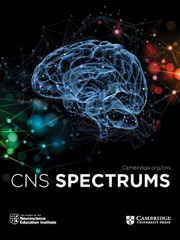No CrossRef data available.
Article contents
Question-and-Answer Session
Published online by Cambridge University Press: 07 November 2014
Abstract
Bipolar disorder is a prevalent psychiatric disorder with a high rate of misdiagnosis and evidence of degenerative progression. Research indicates that the interval between bipolar episodes decreases steadily until the patient settles into a relatively frequent course of mania and depression. Various imaging techniques have been used in the understanding of the brain pathology underlying bipolar disorder through identification of patterns consistent with disruption of the normal brain activity in bipolar patients. These techniques have demonstrated evidence of abnormalities in the structure and function of the prefrontal cortex. In addition, the cerebellar vermis, which serves as an error-detection function to modulate the iterative network, appears to shrink with recurrent episodes. Functional imaging demonstrates that the anterior limbic network is overactivated and overresponsive in patients with bipolar disorder. In many patients, those deficits are often compensated for by activation of other brain areas. Ultimately, when the compensation fails, expression of bipolar symptoms arise. Using magnetic resonance spectroscopy, simple models can be constructed based on the hypothesis that mitochondrial function may be impaired in bipolar disorder. There is also increasing evidence that psychotropic medications can affect specific brain regions that are thought to be involved in the pathogenesis of psychiatric disorders. Glutamate levels appear to be elevated in untreated patients with bipolar disorder, which may cause glutamatergic neurotoxicity and negative therapeutic implications. Further advances in brain imaging may contribute to the improvement of available therapies and the understanding which treatments will be most suitable for specific patients.
- Type
- Other
- Information
- Copyright
- Copyright © Cambridge University Press 2007




